


|
Solar Flux Sensor for my RV |

|
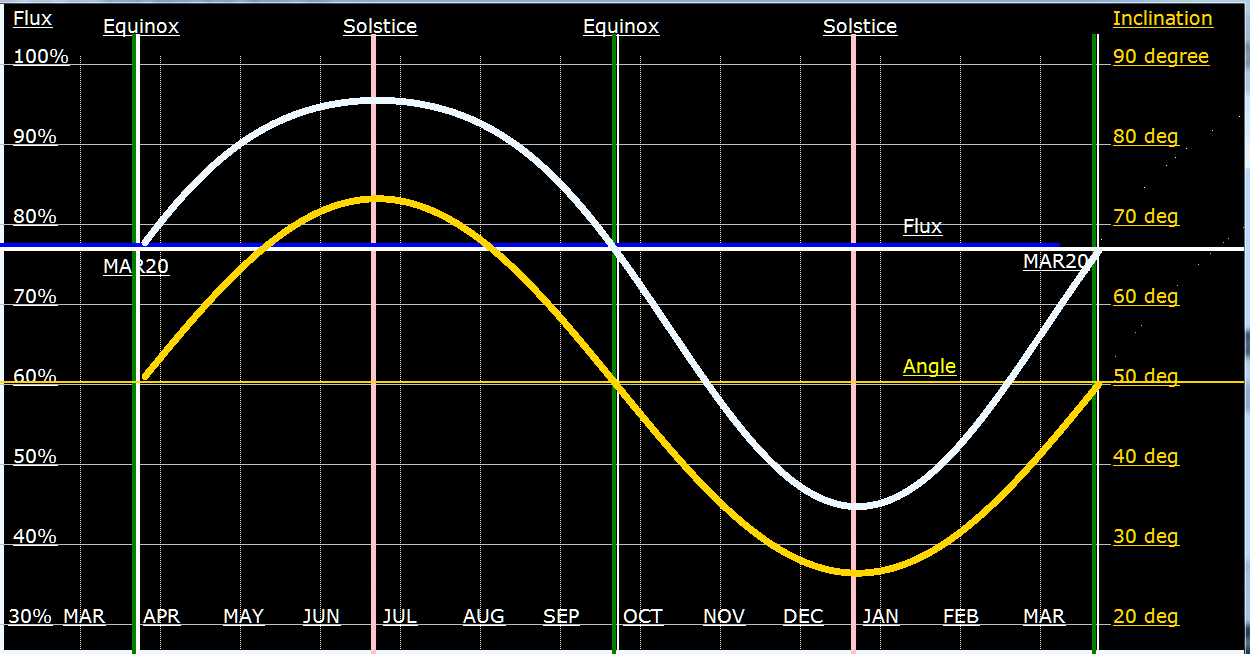
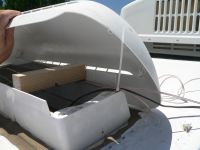 The old Sensor:
The old Sensor:
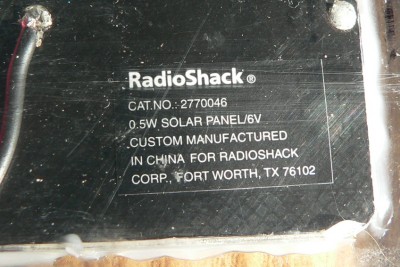
|
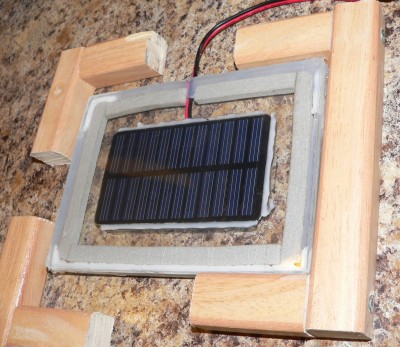
|
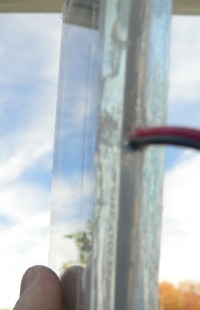
|
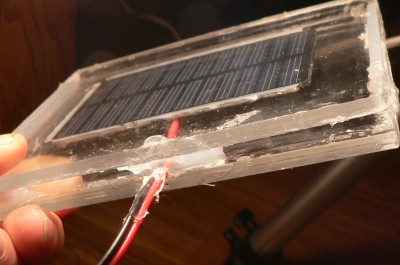
|
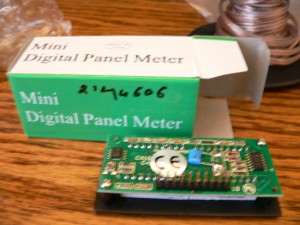

|
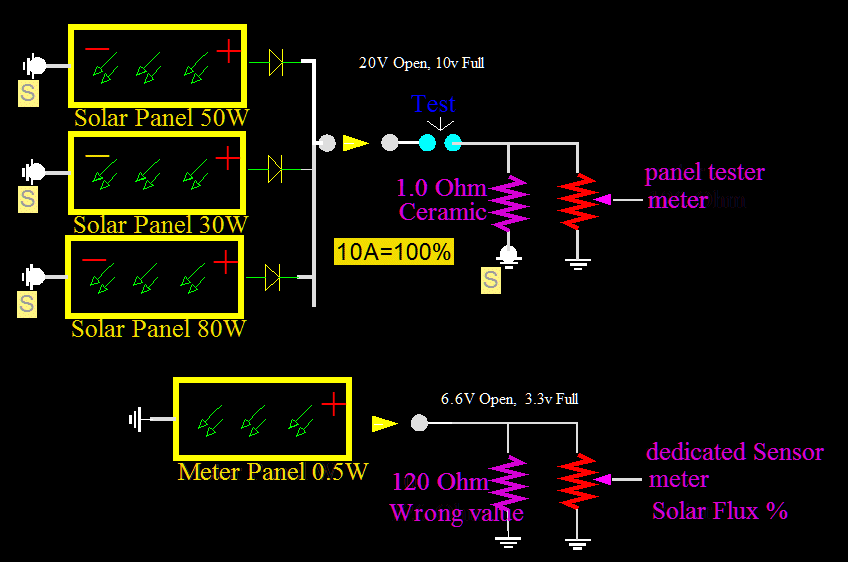
|
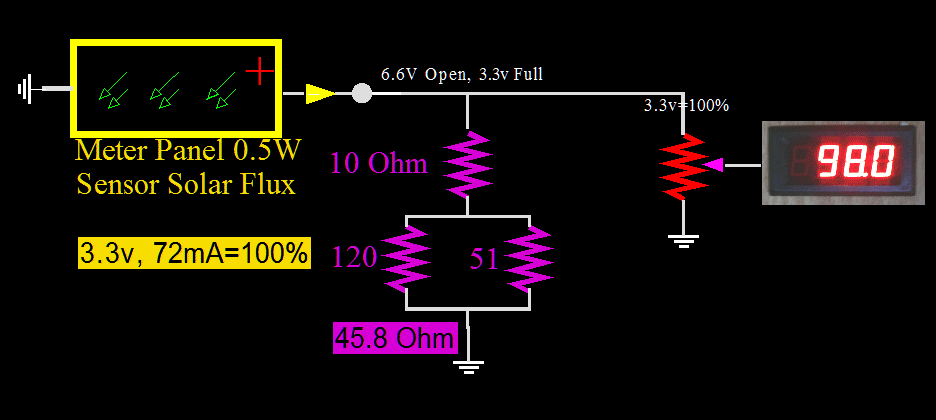
|
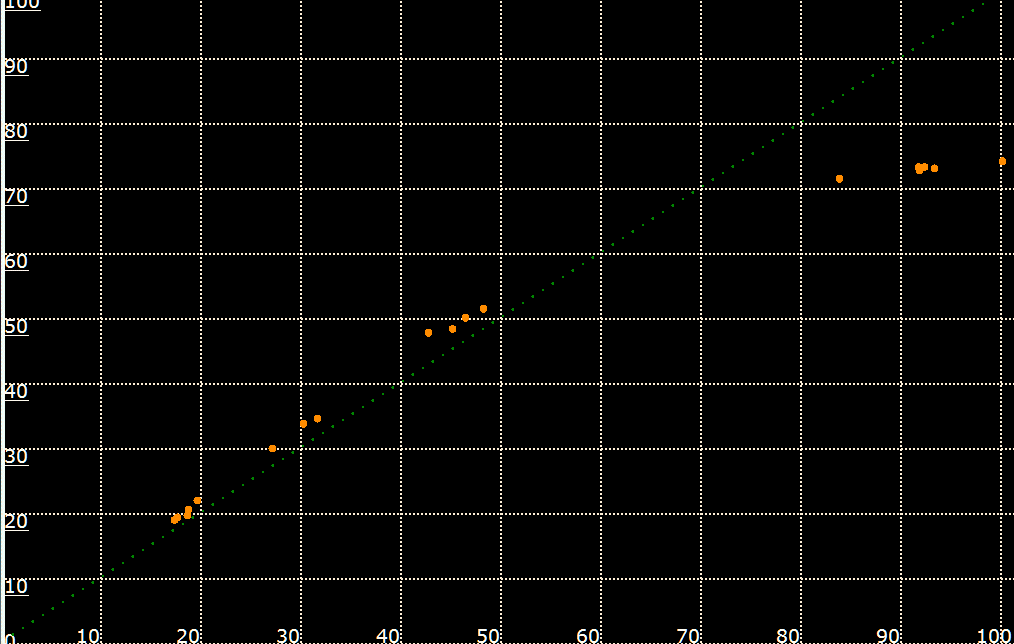
|
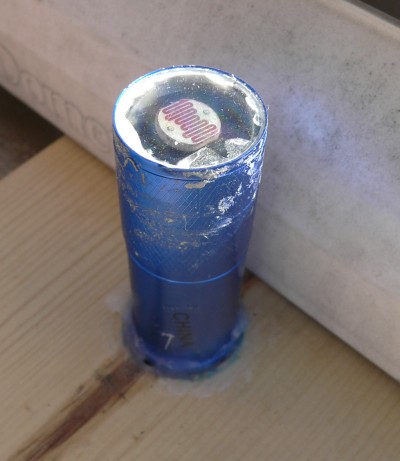
 The actual sensor is made out of a flashlight. It is covered by medicine bottles.
The sun can not be allowed to come in from the sides. If it did it would read direct sunlight,
and not the horizontal plane. The yellow bottles do not attenuate at all, or less than 1%.
The actual sensor is made out of a flashlight. It is covered by medicine bottles.
The sun can not be allowed to come in from the sides. If it did it would read direct sunlight,
and not the horizontal plane. The yellow bottles do not attenuate at all, or less than 1%.
 RV Voltage is at the top. It is variable. A zener holds it at 12.01 volts.
The PhotoResistor is located up on the roof. It has a tremendous range:
from several megohms in dark to a few hundred ohms in light.
RV Voltage is at the top. It is variable. A zener holds it at 12.01 volts.
The PhotoResistor is located up on the roof. It has a tremendous range:
from several megohms in dark to a few hundred ohms in light.
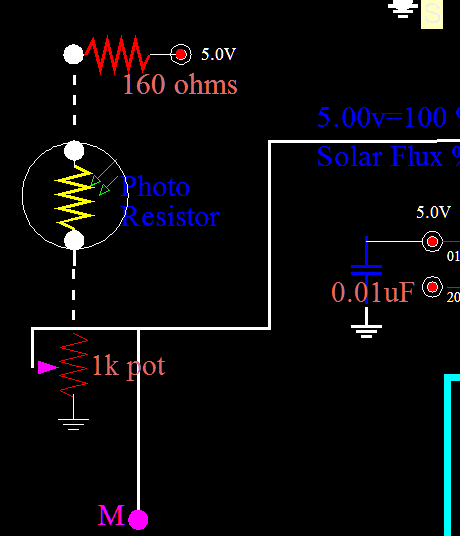
|
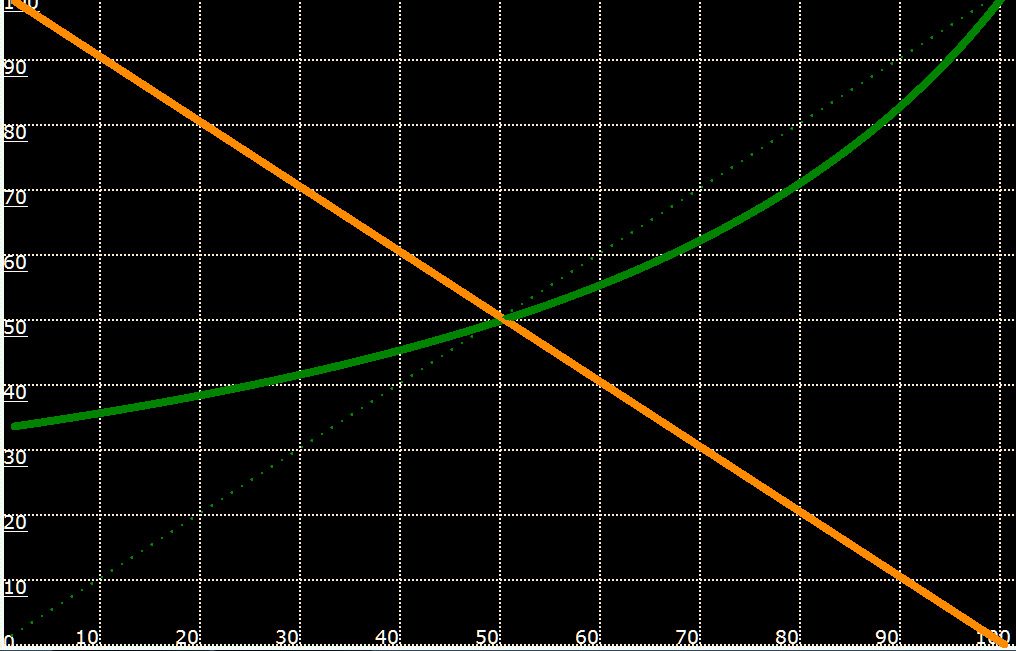

 This sensor works perfect. It works great. Too great!
This sensor works perfect. It works great. Too great!

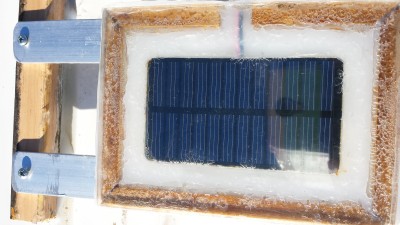
|
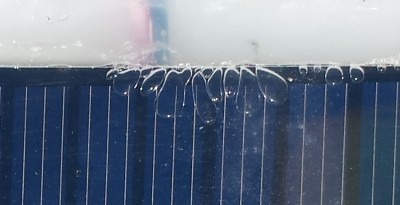
|
 Here is a typical IV curve for a Mono or Poly crystalline silicon 22 VOC solar panel.
(I copied this graph from Public Domain on the internet.)
Here is a typical IV curve for a Mono or Poly crystalline silicon 22 VOC solar panel.
(I copied this graph from Public Domain on the internet.) I have an additional parallel load of a 100k pot
to give me the calibration adjustment of EXACTLY 10.00 volts at 1 Sun.
I have an additional parallel load of a 100k pot
to give me the calibration adjustment of EXACTLY 10.00 volts at 1 Sun.
 Another Solar Flux Sensor...
Another Solar Flux Sensor... Unfortunately, there is an LED on this panel that MUST be disabled.
This panel comes with a flashing blue LED that indicates that it is working.
There are several problems:
Unfortunately, there is an LED on this panel that MUST be disabled.
This panel comes with a flashing blue LED that indicates that it is working.
There are several problems:

Panel in unfinished cradle with plastic cover. |
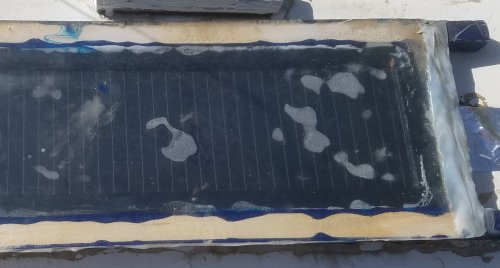 There is trapped water condensation on the top plastic. Obviously this light obstruction will muck with the calibration.
Here is what happened: A few months ago a dead bug was inside, laying in the center of the panel.
I was able to shake the bug to an edge out of the way, where he still remains today.
Originally, I had planned for air ventilation to prevent condensation, and that part was working OK. But then I got a bug!
As a result, a few months ago, I sealed the whole thing with silicone.
Now, no more bugs. But I traded bugs for condensation. Not a good trade...
Even though the sensor still works and functions, the construction is a total failure.
There is trapped water condensation on the top plastic. Obviously this light obstruction will muck with the calibration.
Here is what happened: A few months ago a dead bug was inside, laying in the center of the panel.
I was able to shake the bug to an edge out of the way, where he still remains today.
Originally, I had planned for air ventilation to prevent condensation, and that part was working OK. But then I got a bug!
As a result, a few months ago, I sealed the whole thing with silicone.
Now, no more bugs. But I traded bugs for condensation. Not a good trade...
Even though the sensor still works and functions, the construction is a total failure.
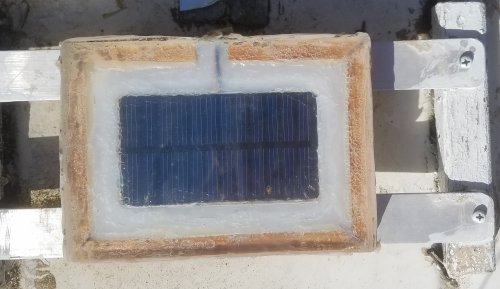 This smaller sensor, totally incased in silicone sealant, is still looking and working fine.
But I have made a change in its function. I have dedicated this sensor to be only audio.
This smaller sensor, totally incased in silicone sealant, is still looking and working fine.
But I have made a change in its function. I have dedicated this sensor to be only audio.
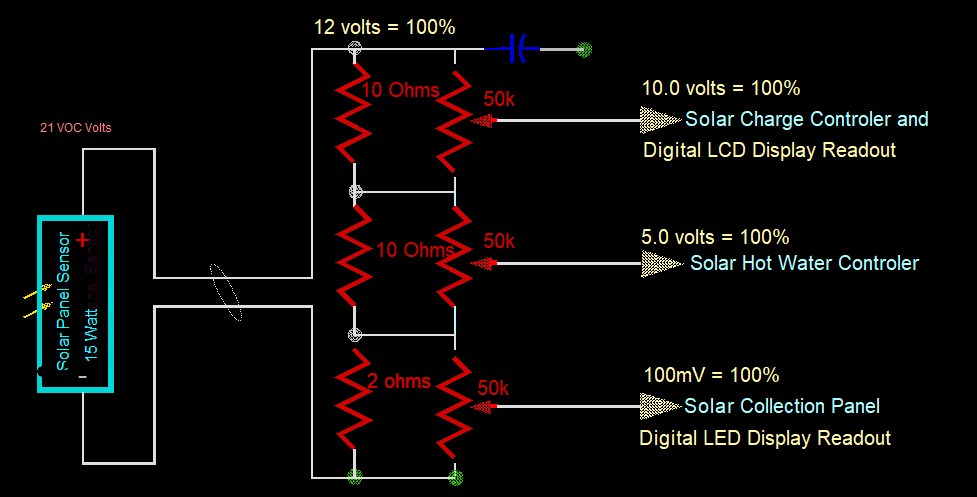
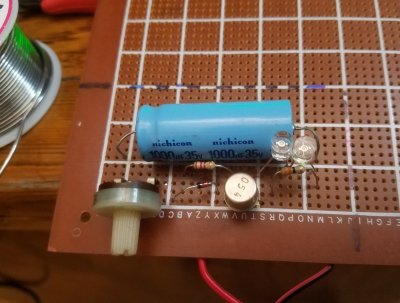 Going back to the Audio Sensor...
Going back to the Audio Sensor...
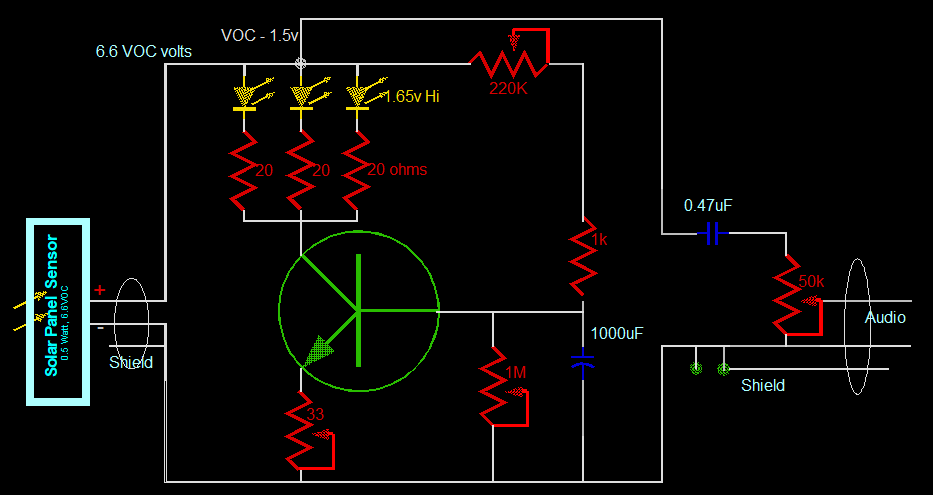
 This variable load takes a long time to adjust. It must work at full sun light, twilight, and night.
The first requirement is a way to produce a constant audio signal for testing.
I thought of bringing a little fan up on the roof, as I have heard fans before in a solar panel.
But, instead, found this gas, maybe neon, indicator in my junk box.
Just screwed it into a portable clamp, and haul it up on the roof, and place it in front of the sensor. Simple!
This will be 120 Hz, two pulses per cycle. The fan would be a higher frequency, depending on number of blades and such.
This variable load takes a long time to adjust. It must work at full sun light, twilight, and night.
The first requirement is a way to produce a constant audio signal for testing.
I thought of bringing a little fan up on the roof, as I have heard fans before in a solar panel.
But, instead, found this gas, maybe neon, indicator in my junk box.
Just screwed it into a portable clamp, and haul it up on the roof, and place it in front of the sensor. Simple!
This will be 120 Hz, two pulses per cycle. The fan would be a higher frequency, depending on number of blades and such.
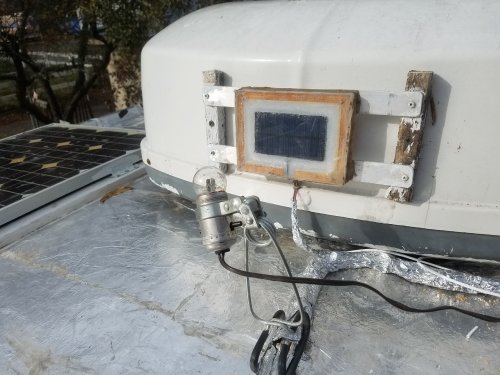 When I first set this up, it was a bright sunny day.
And to simulate lower light levels, I had to climb up on the roof with a large towel and continually block and unblock the sun.
The sound level is loud in both full sun and in relative darkness.
But it is real task to get both at the same time with the adjustments at hand, and it requires a lot of climbing up and down.
And with that towel coming on and off, the neighbors are going to think I went nuts up on a roof.
When I first set this up, it was a bright sunny day.
And to simulate lower light levels, I had to climb up on the roof with a large towel and continually block and unblock the sun.
The sound level is loud in both full sun and in relative darkness.
But it is real task to get both at the same time with the adjustments at hand, and it requires a lot of climbing up and down.
And with that towel coming on and off, the neighbors are going to think I went nuts up on a roof.
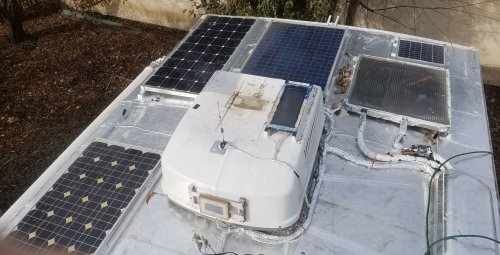 As you can see, both sensors are on the Air Conditioner. Both sensors used to be on top of the AC, but I thought I would try out the sounds from the horizontal.
For example, I have heard "alternator whine" from headlights of some cars, and shiny chrome wheels can be heard also.
Lake sounds from the waves are awesome too;
And insect life is also more active on the horizontal.
But florescent lighting, even in the daytime, may make this position unusable.
As you can see, both sensors are on the Air Conditioner. Both sensors used to be on top of the AC, but I thought I would try out the sounds from the horizontal.
For example, I have heard "alternator whine" from headlights of some cars, and shiny chrome wheels can be heard also.
Lake sounds from the waves are awesome too;
And insect life is also more active on the horizontal.
But florescent lighting, even in the daytime, may make this position unusable.